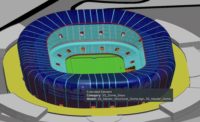Real estate companies are now investing heavily in digital twins. In the prior two years, almost 40% had invested in the technology—even if they may not have been able to manage it properly, Björn Burbach of consultant Siemens Advanta wrote last last year.
Not only are highly advanced buildings using improved digital twin technologies, office or warehouse owners also are looking to update how they manage. And increased levels of technology inside homes allows additional data analysis and a growing need for digital facility management companies to monitor and manage them.

But there are some unresolved issues.
A digital twin is a digital model, in this case of a building, that provides information and alerts about its maintenance status.This service may or may not be based on real time depending on the provided service. When most advanced solutions are applied, artificial intelligence (AI) predictive algorithms can help to allow problem management before facing critical events.
It may sound like something new in the built environment sector, but it is not. For several years already, different industries have been monitoring their machines and buildings through digital twins, models or systems allowing them real-time control. Just think of banks with their anti- intrusion systems or museums with their temperature and humidity controls.
Efficient buildings means better quality and less expense: retrieving data from these buildings represents the most interesting point in order to identify what facility management services can provide to holders.

What are the problems owners and facility management companies are facing?
From an owner's perspective, there is not a vast evidence of efficiency. Which are the key performance indicators that really track these incredible performances? How can they really know how much money could be saved? The lack of indicators in the building information modeling sector can lead to a lack of trust and investment.
Only 10% of companies can really reveal return on investments in digital twin technology, Burbach wrote last year on the Siemens Advanta website. These systems are already well developed in the industrial sector, they provide good results as they have been tested providing improvements in efficiency and cost savings. On the contrary, when we refer to warehouses and offices, where different fields are implied, it is not easy to verify common standards and strategies, and not easy to determine efficiency and cost savings.

On the facility management consultant side, there are other issues. Let’s suppose that one of the big players in facility management consulting really wants to invest in a digital twin service and really wants to have an improvement in managing a big warehouse or office building. How can it provide a service that can respond to the client's needs?
The first issue is that the client has to know what he or she is looking for. Is it a service focused on energy efficiency rather than security or occupancy control? What does he or she really want regarding the control of the building? Different questions can be addressed in different digital model setups and therefore different sensors. If it is not a generic improvement or a bigger control device: it can differ by focusing on specific aspects where the company is probably losing money.
The other issue is linked with the AI predictive algorithms.
If a real estate company wants something like a real-time alert or a predictive system, it must have and provide collected data in a readable and digital way. Therefore sophisticated processes need a strong data basis: they can’t have, like often happens, scattered system with some data on digital support, some on paper and even some only known by users. The AI team must have reports, data coming from sensors, time-stamped certifications of quality while everything is provided within a common data environment where analyses can be performed.

At this stage it’s mandatory to consider past as well as present data, since it will represent the starting point. Having both kinds will allow users to spot trends. This is the very basis for the digital twin implementation: to allow forecasts of cash flows and increased efficiency.
Companies must be aware that while looking into digital twin services they have to be prepared to provide this right accessible database before starting. Otherwise, the results may not be reliable. If the financial analysis based on the data only provides a rough order of magnitude about the costs and performance, improvements are less likely and there may not be any money saved.
When it comes to digital twins, we are aware that the technology exists and it can be deployed for many uses and situations. But from the client perspective, there must be a clarity about goals and intentions and a structured data background.
That is the formula for success.
Nicola Ianeselli, BIM lead for BEC Industries; Riccordo Coccoluto, BIM coordinator at Ricardo Bofill Taller de Arquitectura; Massimo Purin, BIM expert for Italy’s LFAGroup and Sebastiano Fabrizio Muscolino, BIM Expert for eFM spa., can be reached at nianeselli@becgrid.com.





Post a comment to this article
Report Abusive Comment